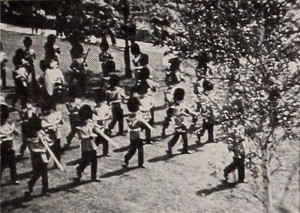
"In Streets of Peace, Lewis B. Sebring, jr., presents a manifold accomplishment in film. Here is a record of the New York World's Fair 1939, but a record which, because of its selectivity, gives the impression of completeness in setting forth a single theme, although the material is both voluminous and varied. Here, also, is an interpretation of the epic idea behind the foreign participation in this great American exposition, the vision of peace, which has since been so rudely interrupted. Mr. Sebring takes his camera through the streets of peace, literally, and we see one after another of the foreign buildings and exhibits at the Fair; we also look at the different national celebrations in the Court of Peace. The visit of the King and Queen of England is recorded in considerable detail. After a scene of children of many lands uniting in a gathering in the Children's World, we find the pointed query as to what these youngsters will make of the "world of tomorrow," and the picture closes with distinguished shots of the United States Building, with its flag and the word "Peace," which appears on its façade. Mr. Sebring's titling is admirable, both in wording and in execution. His Kodachrome exposures have less good moments, but his camera handling is otherwise pleasing. Here is a workmanlike and finished recording of a great international event." Movie Makers, Dec. 1939, 635-636.
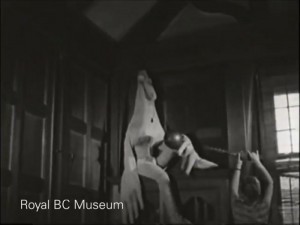
"Produced as a gift to Dorothy Burritt's husband, filmmaker Oscar Burritt (who was working in Toronto at the time), this is an offbeat study of life at their Vancouver apartment -- suite 2, 1960 Robson Street. The camera explores the apartment and the household memorabilia, and Dorothy is seen sitting for a portrait by painter Peter Bortkus. Later some friends drop by for a screening of Sacha Guitry's film Pearls of the Crown, followed by a party. Among the guests are Moira Armour, film editor Maureen Balfe, UBC student Stanley Fox, photographer Peter Varley, and an unnamed figure wearing a bird costume. Most of the people shown would have been involved with the National Film Society of Canada (Vancouver Branch). Suite Two won honourable mention (amateur category) at the first Canadian Film Awards in 1949." (BC Archives)
The film was restored in 1986 by the British Columbia Archives.
"Honorable mention was also extended to J. Sherlock of Sydney, Australia, for his 'Surf, Sand and Sunshine,' a scenario picture of a day on the surf with a shark scare and a love theme welded into an interesting pictorial portrayal." American Cinematographer, Feb. 1936, 73.
"Film about a surprise party at the Woodley residence." Library and Archives Canada.
"Telemark, filmed in the Swiss Alps by William G. McKelvy, ACL, is, as its name suggests, a skiing picture. However, it is more than that — it is also a very delightful and neatly plotted comedy that is the more convincing for being uncomplicated with the usual subsidiary plot and counter plot. Four or five youths who are expert skiers, one who is a novice, and a girl are at the beginning of a down mountain ski trail. The girl offers a kiss to the boy who can catch her. She tarts off, the able skiers follow hard on her trail, while the beginner stumbles and lags far behind. But the girl decides to trick her pursuers and hides on the way. The ending is obvious. The picture was exquisitely planned and sequenced for, as the camera follows the skiers down the mountain, there is complete smoothness in the shift of viewpoints. The action is made the occasion of splendid studies, as the boys on the run swerve and turn in stems, Christianias and Telemarks. Mr. McKelvy did not neglect to select charming compositions and to take full advantage of clear air and the contrast between the dark figures and trees and the white snow." Movie Makers, Dec. 1933, 500.
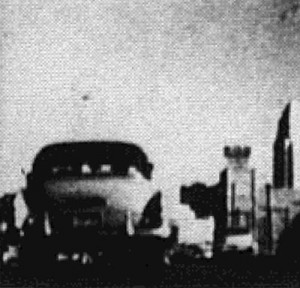
"A fast ride through the mountains, over the desert, and on to the freeways to the accompaniment of a superb sound track. An audio-visual experiment designed to elicit a response from the audience. You cannot help but become a part of the "tempo" PSA Journal, Oct. 1963, 42.
"A lover of wild life and good fishing, Russell Jameson has a real fishing picture for those who would like to go into the wilds of British Columbia where the lakes and streams are generously populated with big ones which are willing to make the anglers' acquaintance. Most of the fishing is with barbless hooks for the sport and catch is returned to the stream uninjured. The musical score and sound effects add a great deal to this picture. It will tempt any fisherman with the time and money to indulge in the sport" PSA Journal, Nov. 1958, 48.
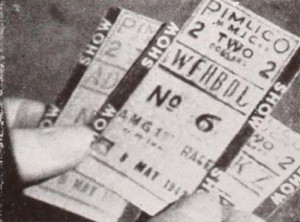
"In Turf Tales, Leonard Bauer, jr., has tackled an acceptedly difficult subject for the personal movie maker — and has done well by it. The subject, as might be guessed, is professional horse racing. The setting of Mr. Bauer's study is the relatively ancient track of Pimlico, outside Baltimore, with the climax of the picture provided by a record of its traditional classic, the Preakness. But the strength of Turf Tales derives more from its highly competent sequences of human interest behind the scenes — the early morning time trials, the stable boys and their chores, the track farrier as he shapes the delicate racing shoes and the strange, unexplained mascots of the high strung thoroughbreds. A commendably restrained narrative, set against a musical background, accompanies the film on a sixteen inch disc recorded by Mr. Bauer." Movie Makers, Dec. 1944, 496-497.
"Two Minutes to Play, running two reels, 16mm., and a production of the Greenbrier Amateur Movie Club under the direction of Hal Morey, ACL, stands out among the year's films because of its unusually deft cutting and shrewd camera treatment. Although plotted on the standard football yarn, the picture tells its story swiftly, smoothly and with a rising tempo of excitement that is a direct tribute to the production and to the editing. Consistently good photography, effective and varied camera angles and a well planned script were contributing factors in the success of this genuinely entertaining film story." Movie Makers, Dec. 1932, 538.
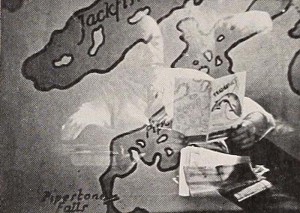
"No better example of human interest in a vacation film will be seen for a long time to come than was exhibited in Two Perfect Weeks, made by Walter F. Hinkle. Strangely enough, there was practically no material of actually catching fish, yet the film gives one the impression that the party consisted of all genuine fishermen and that no more dyed in the wool sportsmen could be found than these happy vacationists. Starting with a clever introduction, the film moves rapidly along into camp. Here, a most handsome array of interest packed close shots serves to tell the story of tired business men at play, until the entire audience is ready to sit down and enjoy a meal of freshly cooked fish. The film ends in a novel way. To signalize the return to civilization, each member of the party is seen shaving off the beard that grew during the two weeks at camp. Although each of the group is introduced by means of a different type of activity, the picturization is at no time slow or dull. The secret lay in the fact that there was no "monkey business" in front of the camera, but rather a good collection of intimate views of the persons going about their various tasks. The color titles are well executed." Movie Makers, Dec. 1939, 632-633.
Total Pages: 14